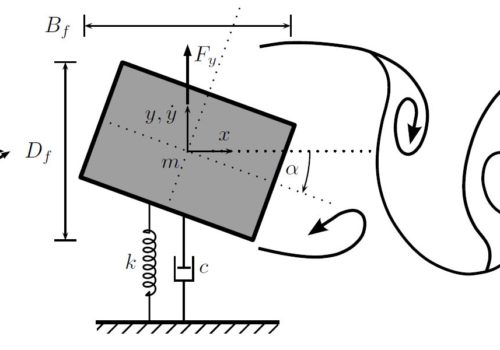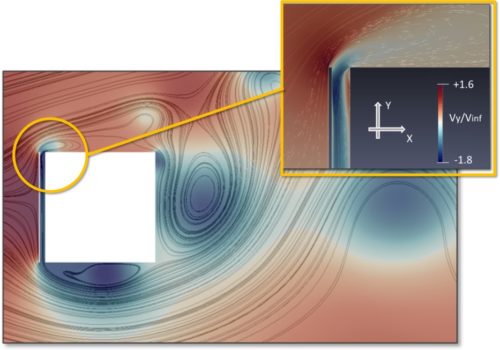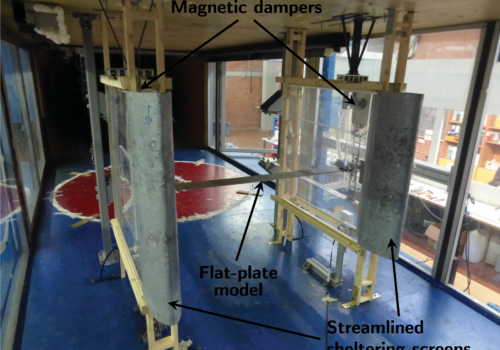OPTIMIZATION OF VERTICAL-AXIS-WIND-TURBINES
Research activity duration: 2016 – now
Vertical-Axis Wind Turbines (VAWTs) differ from the conventional Horizontal ones (HAWTs) in the orientation of their axis, which leads to differences in their operation. Even HAWTs present the highest efficiency, VAWT are omni-directional, adapting quicker and better to the changing wind, and operate at lower Tip-to-speed ratios (TSR), which makes them less noisier. Thanks to these features, VAWT have found in urban wind energy their market during the last decade.
Urban flows present a challenge for wind energy applications; they are changing, highly turbulent and inclined, even reversed sometimes. The best location for a wind turbine in a city has been identified as the top of high-rising buildings. In this location, wind speed is higher than in the surroundings, but also presents high levels of turbulence. Following CRIACIV’s valuable experience in turbulence testing for bridge aerodynamics, a set-up has been develop to test VAWT performance and characteristics under turbulent flows.
Several grids have been built to generate artificial turbulence inside the wind tunnel. A detailed study of the flow generated by this grid has been done, in order to reproduce stable, uniform conditions, reaching levels of Wind turbulence Iu and Integral Length Scales Lux comparable to the ones present in an urban environment.
Up to date, the set-up has been used in a project to test a prototype of H-Darrieus VAWT in collaboration with the Vrije Universiteit Brussel, in Belgium. Apart from extracting the power curves of the turbine, the effect of free stream turbulence in the turbine wake and vibrations have been also measured.
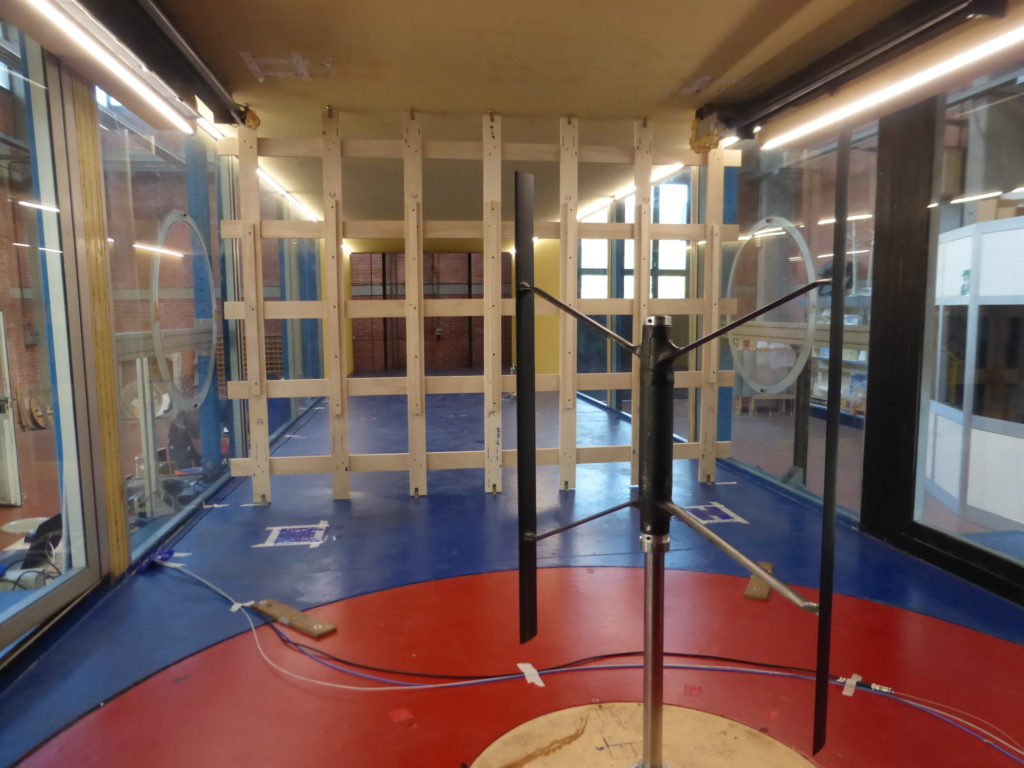
Set-up for the testing of VAWT under grid-generated turbulent flows.
Tests performed at CRIACIV and corroborated at the Vrije Universiteit Brussel (VUB) are consistent in that the performance of the VAWT is improved with the increase of turbulence. The values are non-dimensionalized with the optimal CP and λ values obtained in the free stream case (without turbulence grid).
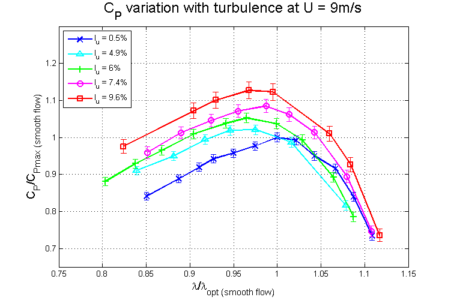
CP – λ curve variation with turbulence at U = 9m/s.
Turbulence also improves the wake recovery downstream the VAWT. The masurements taken at the middle horizontal plane of the turbine show that the wind speed deficit is 10% lower with 10% of free stream turbulence (compared to the non-disturbed flow).
The following steps of the project will be devoted in providing a solid explanation for this phenomena, and from this understanding propose an optimized turbine able to harvest more efficiently the turbulence in urban environments.

